Curious Questions: Should you get rid of wasps?
Yes, they're a pain at your summer barbecue, but wasps are also voracious predators of other insects — and some of Nature’s most important pest controllers. Seirian Sumner, author of ‘Endless Forms: The Secret World of Wasps’, explains a few of the reasons that you might want to hold off calling the pest controller — and, indeed, why you it might be time to start providing wasp nesting houses in your garden, alongside that designer bee hotel.
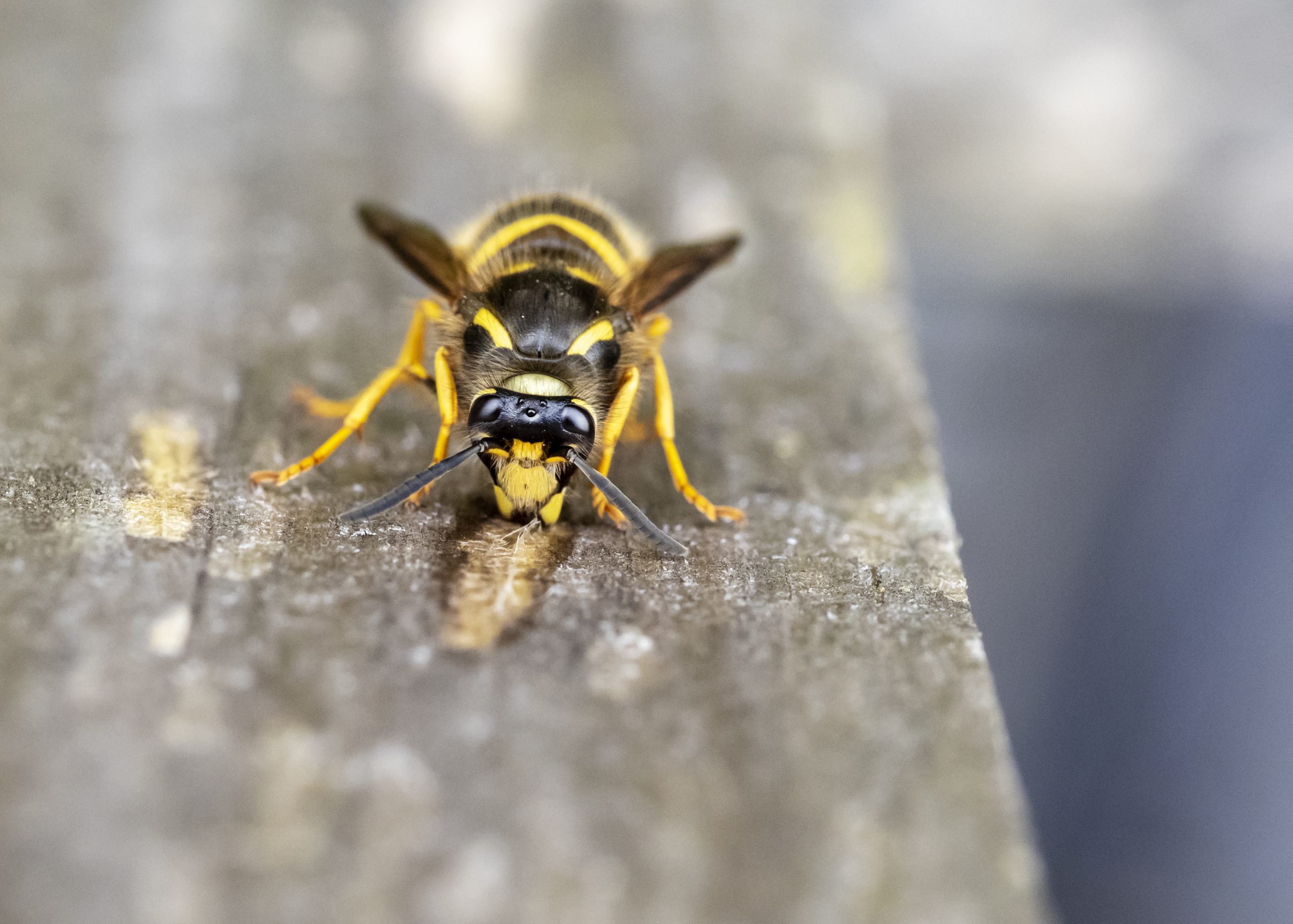

Creeping through the undergrowth, she spies her victim and pounces; one quick punch to the chest disables him enough so that she can insert her prize dagger into the precise location in his brain for the neurotoxin she’s prepared. Zombified, her victim can just about walk, but he cannot resist his assassin as she leads him gently to his underground tomb. She nestles her own baby in his arms and bids farewell, safe in the knowledge that her offspring will grow to be as beautiful and deadly as she by supping on her slave.
This is no work of fiction: it is the work of a jewel wasp paralysing a cockroach to feed her offspring. Welcome to the world of wasps, where evolution has had an awful lot of fun — sometimes gruesome, sometimes grand, but always awesome.
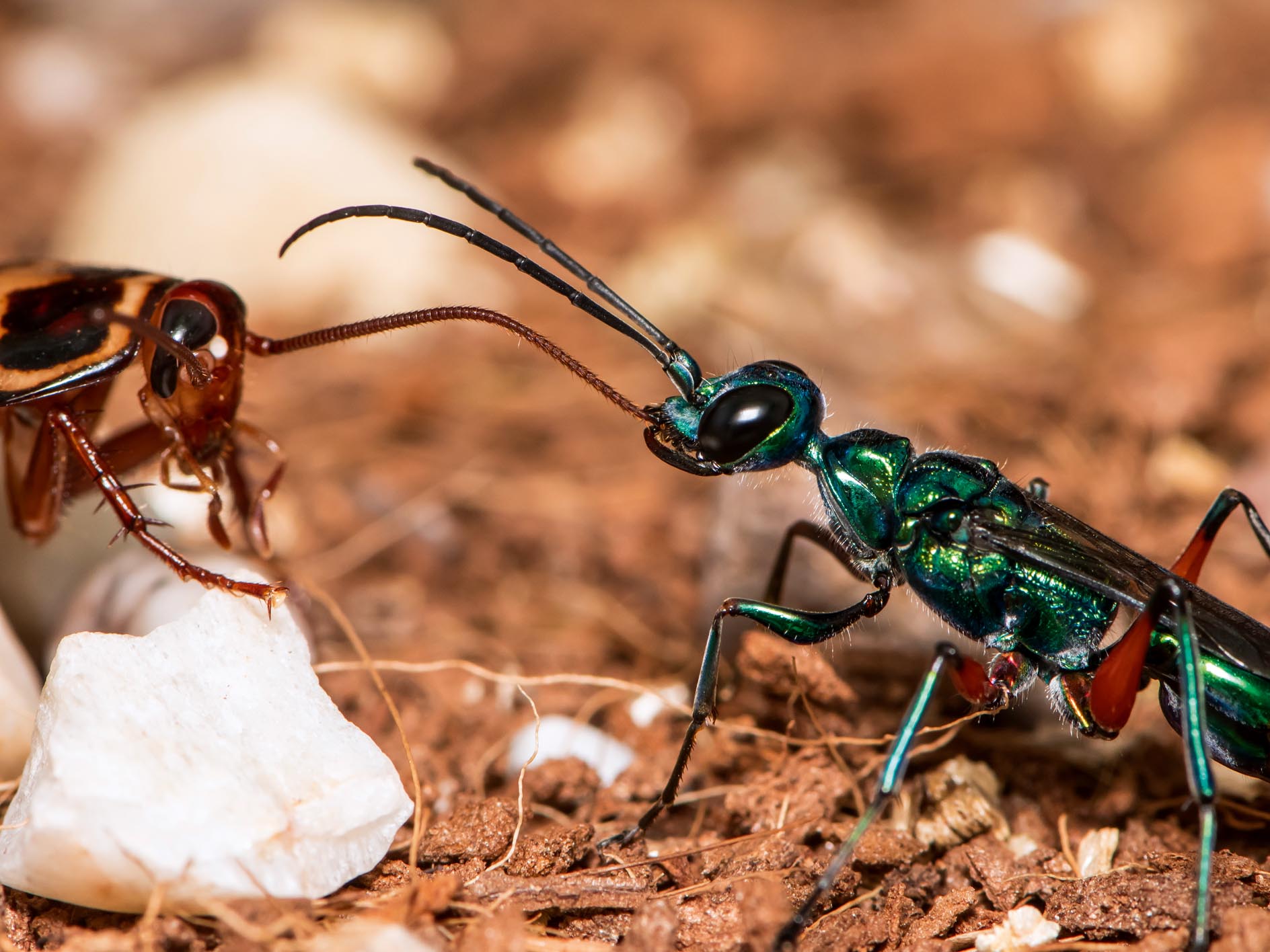
You, too, live in that world. In fact, if we were to label our world according to what is most numerous, wasps would be a strong contender, with more than 100,000 described species. Compare this with a mere 22,000 bees and 13,000 ants. Scientists also estimate that there are likely to be at least 10 times more species of wasps than are currently described, taking the likely number to more than a million.
One million species of wasps? Perplexed? You are well acquainted with wasps from your summer picnics — the black-and-yellow-striped insects that buzz around your barbecue with the entitlement of a self-obsessed toddler at Christmas. These are ‘yellowjackets’ or vespine wasps. Together with their larger (but shyer) relatives the hornets, there are only 70 species of these insects — that’s 0.07% of all wasps, yet these are what most people will inevitably picture.
"Perhaps it’s time to start providing wasp nesting houses in your garden, alongside that designer bee hotel"
The vespine wasps are, undeniably, incredible. They live in societies, empires that are as marvellous as the honeybee. You might have hosted one in your loft. Their citadels are ruled by a monarch, the queen, which founds the nest and lays all the eggs. The first brood are the workers, all of which are female; they hunt for insects and other creepy crawlies to feed to subsequent offspring.
The adults are strict vegetarians and sip nectar from flowers (or your drink) for their personal nutrition. Once the family is several thousand strong and as the late-summer chill descends, larger cells are built: these are for the males and next year’s queens. They leave the nest to mate; males then die, as freshly deflowered females seek out cosy places to hibernate. Your loft is exceedingly inviting.
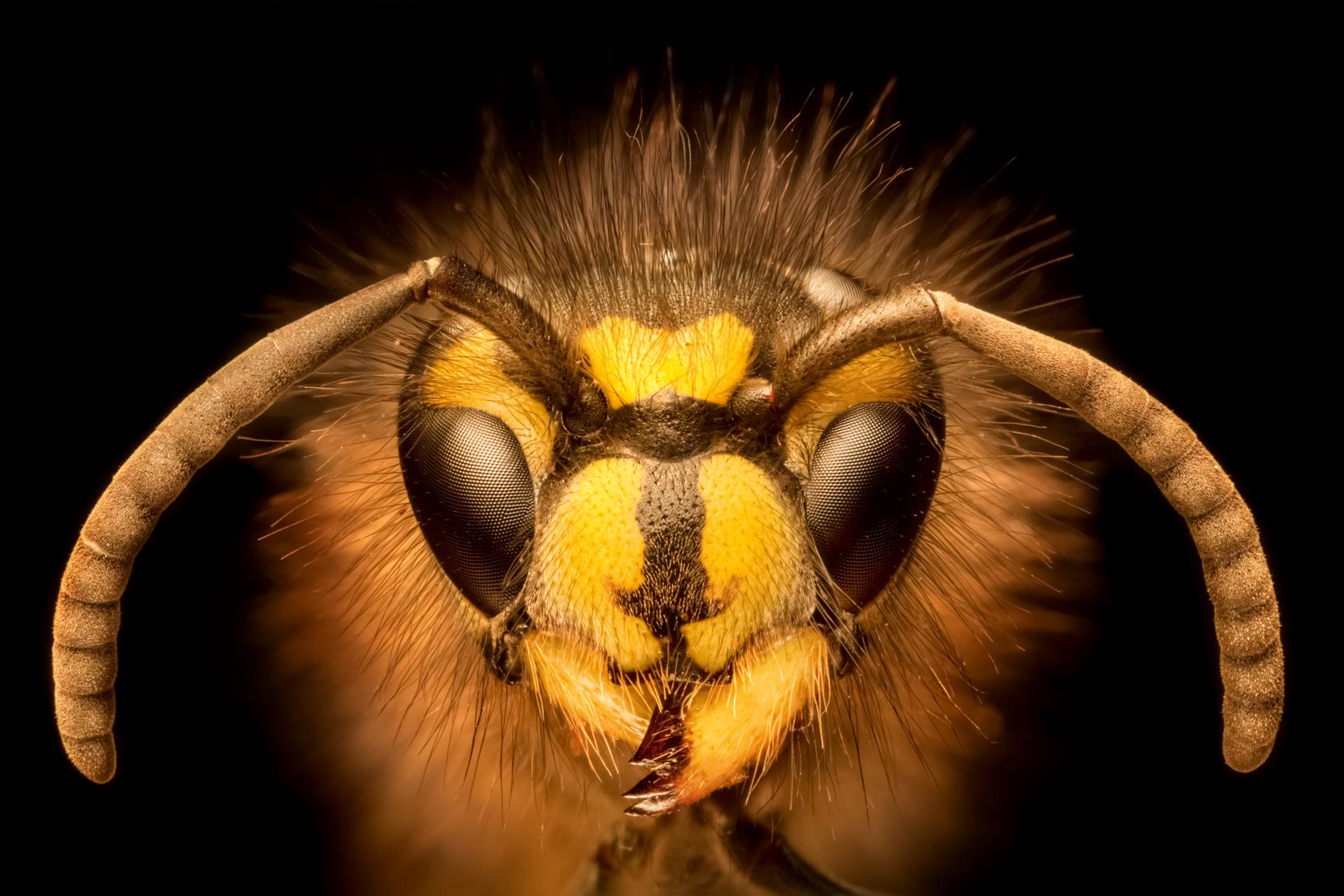
Wondrous and awesome the social wasps may be, yet the most extraordinary secrets lie with those that live a lonely life. You will have seen lots of these, which is no surprise as they account for about 80% of all wasp species. Perhaps you mistook them for little flies or tiny black specks littering your windows — an inconvenience, rather than a threat.
Sign up for the Country Life Newsletter
Exquisite houses, the beauty of Nature, and how to get the most from your life, straight to your inbox.
Take a closer look. Admire her slender form: she wears a sleek and shapely outfit. Her fashion has changed little over the past 240 million years, ever since evolution bestowed on her the ‘wasp waist’. It is the envied gift of an acrobat, affording her abdomen yogic manoeuvrability, permitting the delivery of a precious egg to its dinner in the most elusive places. From snuggly beetle larva burrowed deep under the bark of your apple tree to sumptuous caterpillar curled within the fronds of your cabbages, our corseted wasp will seek it out by smell and vibrations. With the steel of a high-class assassin, she tumbles an egg down her long ovipositor to lay it inside her host. There, her baby has all it needs to feast on an oblivious wet nurse, from the inside out.
These are parasitoid wasps. Diverse and numerous, it’s no surprise that humans have exploited their abilities to kill other insects for our own gain. Farmers release them into their crop fields as tiny agents of war on pests. Perhaps you’ve unleashed some in your own home as a natural way to rid your clothes and furniture of clothes moths.
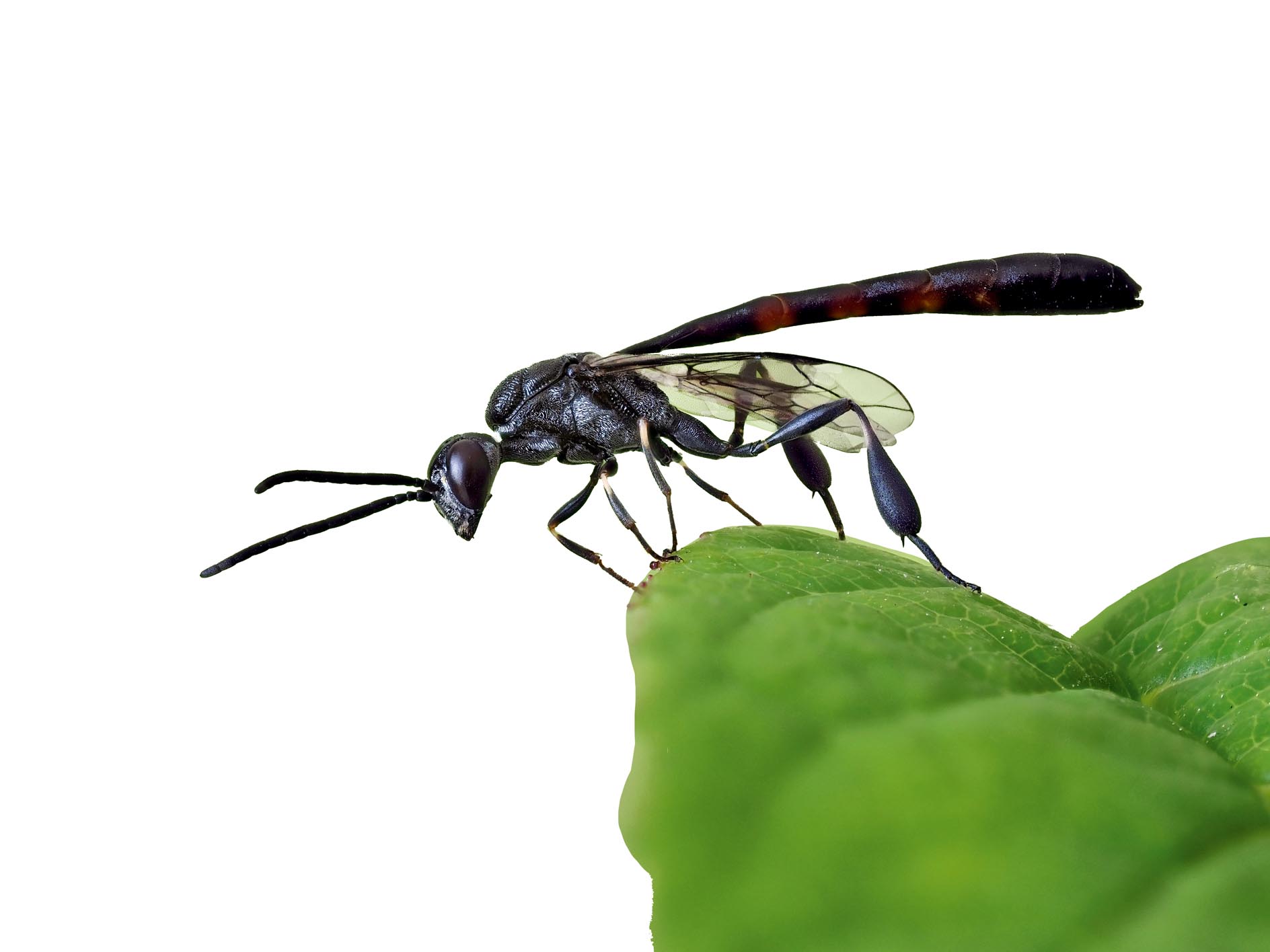
One million years later, wasps modified the ovipositor into a sting — no egg travels down this, only venom. These are the hunting wasps; social wasps use their stings in defence, to deter a hungry badger or an irritating human. But 30,000 species of solitary hunting wasps use their stings to paralyse prey, turning spiders, caterpillars, fly and beetle larvae into living larders for their offspring. Their venom is an anaesthetic, neurotoxin, antibiotic and antifungal cocktail. Their lives play out an unimaginable theatre.
Take the beewolf, a solitary wasp common throughout southern Britain, which hunts honeybees (hence its name). She prepares her paralysed bee for its death chamber: first, the bee is embalmed in spit, a waterproof jacket that prevents fungal attack; next, she injects antibiotics, killing any fungi and (unfriendly) bacteria in the cocoon. The final stroke of genius comes from the egg, which exudes a toxic fart of nitric oxide, a fungicide that we also use to protect fruit from fungi. Not even Shakespeare could dream up such a tale of disease-repelling embalming, antibiotic ooze and toxic gas.

Have you spotted the recurring theme among the wasps? They are all voracious predators of insects and other arthropods. This makes them some of Nature’s most important pest controllers. Take the common yellowjacket wasp: they are eclectic opportunists, preying on pretty much anything they come across. In a typical year, a nest will remove 9½lb of prey: that’s some 9,300 caterpillars, 20,000 bees, wasps and ants, 15,000 flies and more than 43,000 spiders — about 88,000 arthropods per colony.
The idea that wasps could be useful pest controllers has been around for more than a century. In 1900, colonialists in the Caribbean noted how an abundance of them meant their cotton plantations were less plagued by leafworm. In the 1950s, Japanese agriculturalists relocated wasp nests into crop fields and saw a reduction in cabbage butterflies.
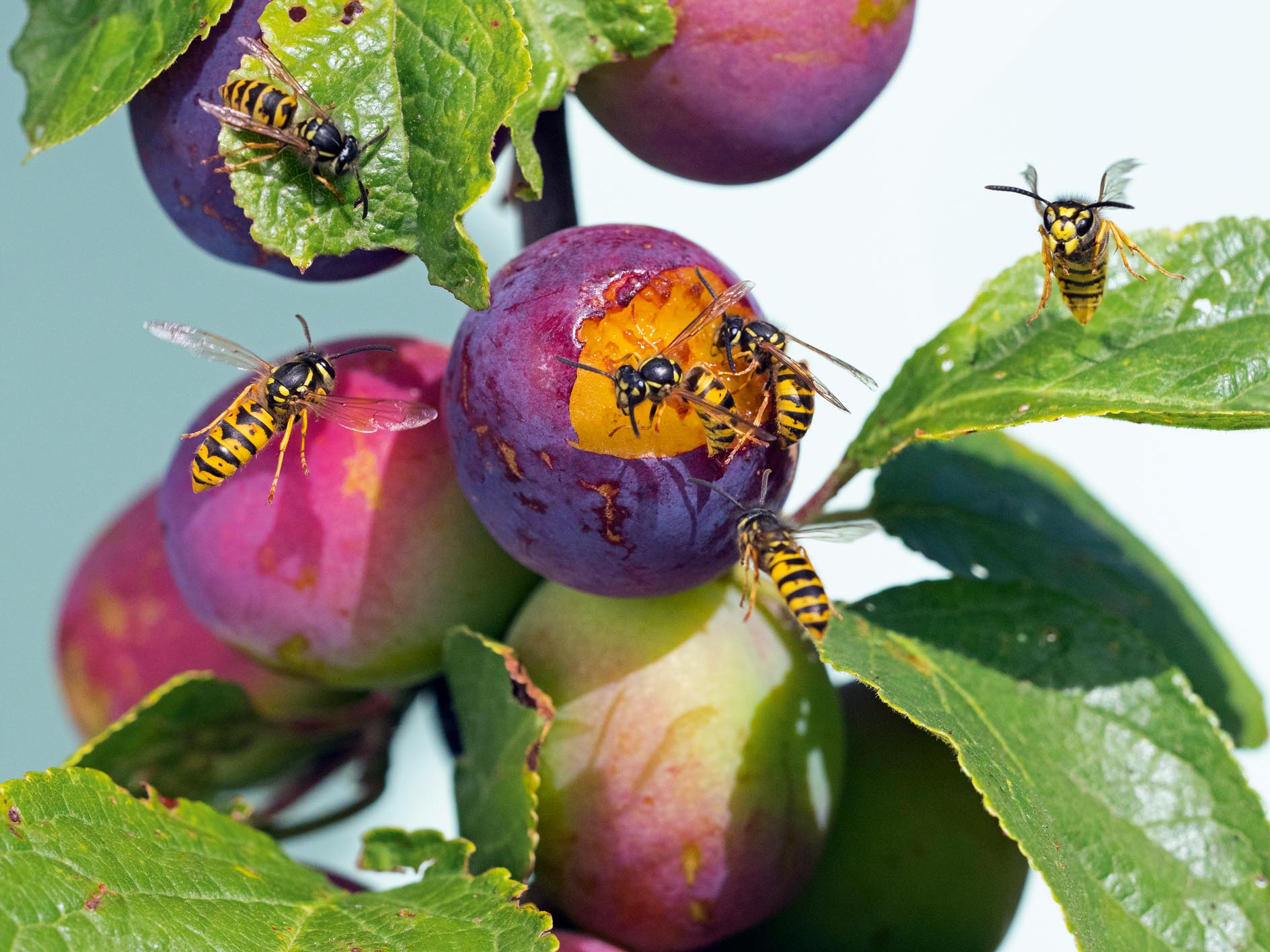
Inexplicably, the pest-controlling potential of hunting wasps has been largely overlooked by scientists, farmers and gardeners. We’re missing a trick here: the chemicals we use to kill crop pests are also affecting the health of their natural enemies, such as wasps. Bin the chemicals, nurture your local native wasp populations and let ecology take care of the rest.
Wasps are also pollinators. Some orchids have evolved to look, smell and even feel like a female thynnid wasp, to attract a pollinating male wasp. Males swoon helplessly from flower to flower, casually spreading orchid pollen, together with their hopelessly spent seeds. Fig wasps and figs offer a more egalitarian deal. Tiny pollen-doused fig wasps squeeze into the fruits to lay their eggs. Male wasps hatch first and mate with the sisters, who romp around the fruit, coating themselves in pollen, before exiting to find a fig of their own. The fig digests any leftover wasp bodies, so you won’t be eating those with your fruit.
There are even ‘pollen wasps’, which have foregone life as a hunter and raise their offspring entirely on pollen, as do their relatives the bees (which, incidentally, are merely wasps that have forgotten how to hunt).
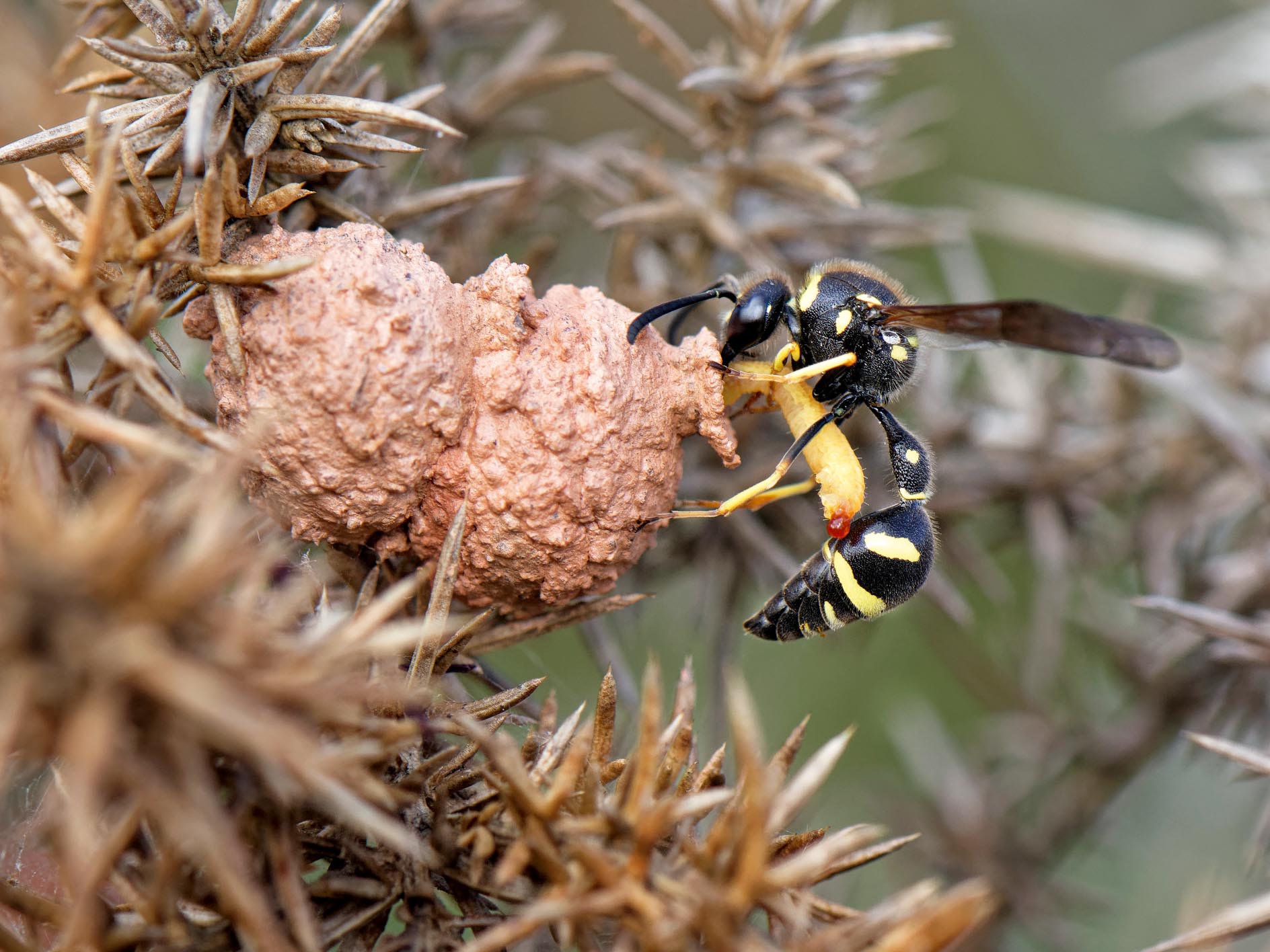
The relationships of orchid, fig and pollen wasps with plants are remarkable, but rare. Most wasps only visit flowers for a sugar fix and are unfussy about which plants they visit. Their contributions as pollinators are little studied, but it’s possible that wasps can match the pollinator prowess of their cousin the bee. Milkweed is usually pollinated by bees, but, in their absence, social wasps are equally as effective. Perhaps it’s time to start providing wasp nesting houses in your garden, alongside that designer bee hotel.
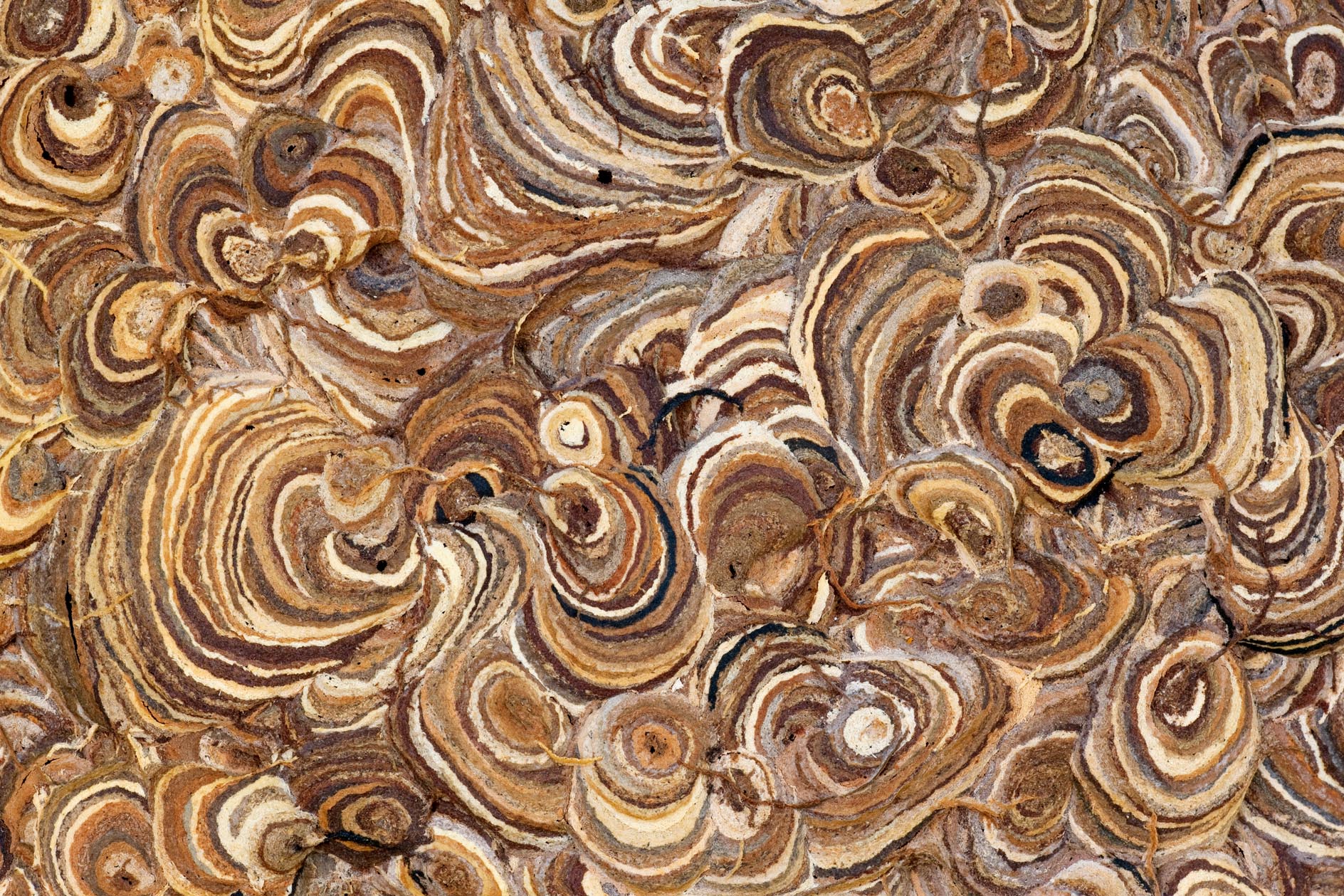
Wasps are beautiful and bizarre, shocking and strange. We are only just starting to understand their endless forms, but the deeper we stray into their secret world, the more wonderful and important we realise they are.
‘Endless Forms: The Secret World of Wasps’ by Seirian Sumner is published by William Collins (£20)
Seirian Sumner on five of Britain's most common wasps
Heath potter wasp (Eumenes coarctatus)
Found mainly in the heathlands of Dorset, this solitary hunting wasp constructs tiny clay pots that resemble Roman vases. Inside, she lays a single egg, which she provisions with up to 25 tiny caterpillars.
Beewolf (Philanthus triangulum)
The beewolf is a hunter of bees, which she embalms and buries in sandy banks, together with an egg and a dose of friendly bacteria to keep the developing wasp baby free from disease as it feasts on the paralysed bee.
Common yellowjacket wasp (Vespula vulgaris)
Your favourite picnic visitor! She’s only after your sugary drinks and ice cream at the end of the summer, when she no longer benefits from the nutrition shared by her sibling larvae.
European hornet (Vespa crabro)
The UK is the northernmost extent of the hornet’s range and it is our largest wasp. In Germany, they are a protected species and the public are encouraged to put out artificial hornet nesting boxes.
Fly-catcher wasp (Oxybelus uniglumis)
This wasp impales its prey on its sting as a convenient way to transport it back to its burrow. The sting is slightly curved with a few extra barbs, which alters the mechanics of an ordinary sting.
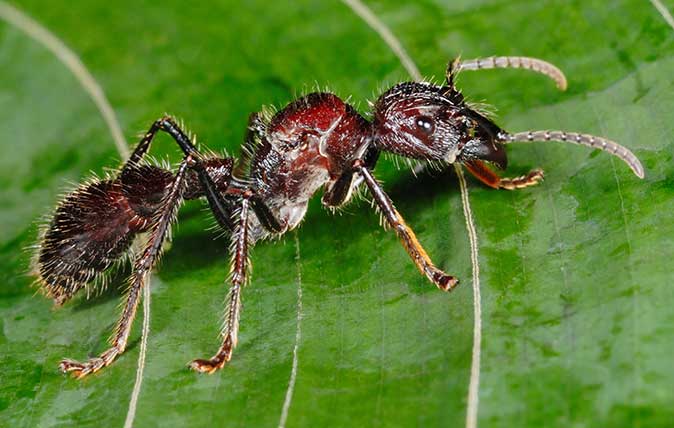
Credit: Photo by FLPA/Hugh Lansdown/REX/Shutterstock – Bullet Ant (Paraponera clavata) adult, standing on leaf in rainforest, Tortuguero N.P., Limon Province, Costa Rica
Curious Questions: What is the world’s most painful insect sting – and where would it hurt the most?
Can you calibrate the intensity of different insect stings? Martin Fone, author of 'Fifty Curious Questions', investigates.
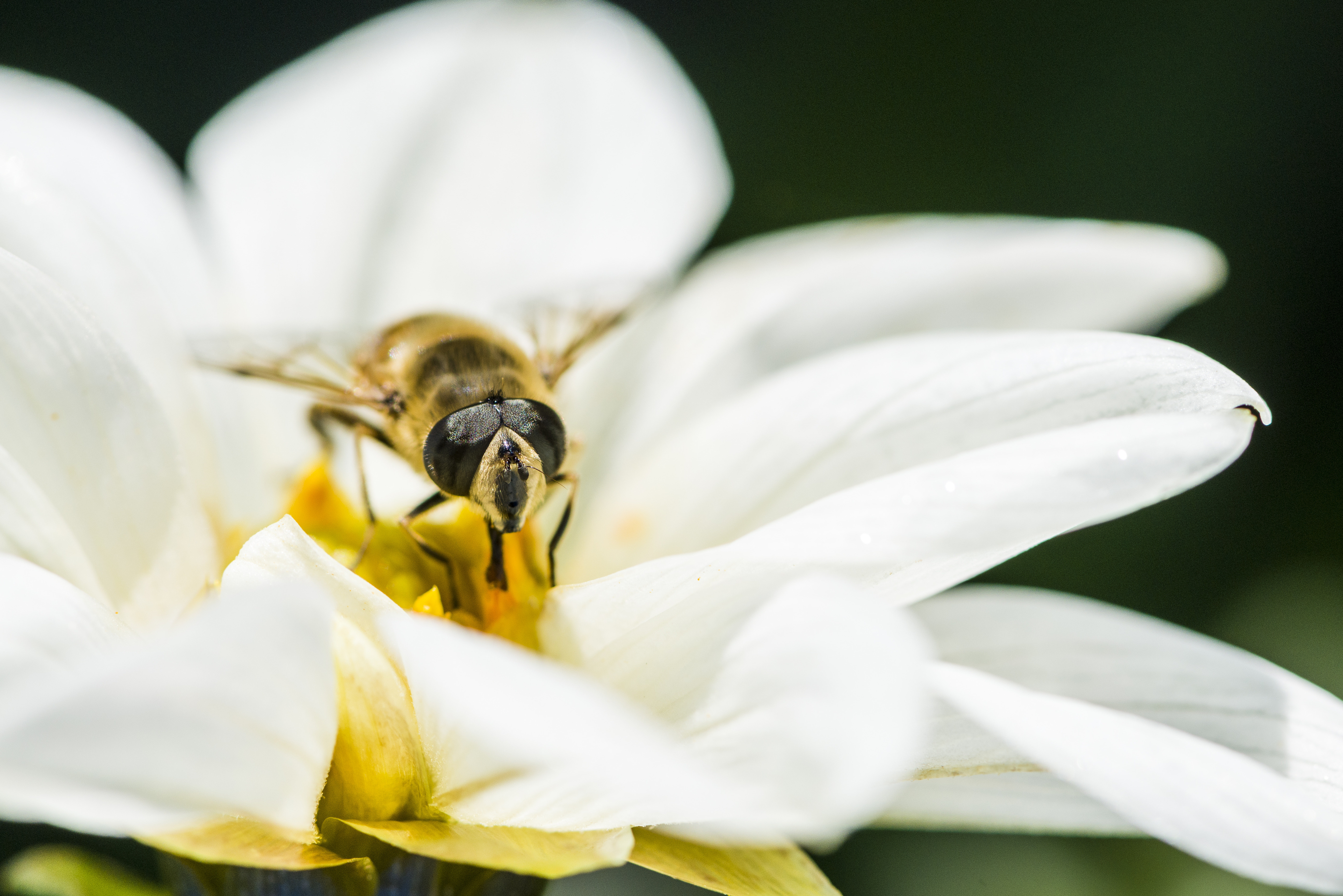
Curious Questions: Do the disguises of hoverflies really keep them safe from predators?
Hoverflies mimic bees, wasps and all manner of other insects in order to put off predators — but does their
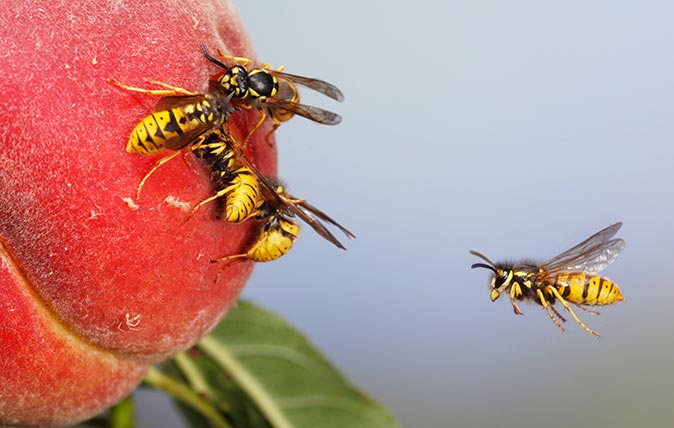
Why you should be delighted to have wasps in your garden, and nine other things to know about wasps
Wasps or ‘jaspers’ may have been plaguing picnics since time immemorial, but they’re actually industrious destroyers of insect pests, says
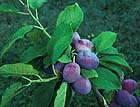
What to do in the garden in August: Harvest and prune plums
It’s between us and the wasps in the battle for the plums, and the season is short

Credit: Getty Images/Robert Harding
Curious Questions: Why don't spiders get caught in their own webs?
Spiders webs are sticky — very sticky — and make short work of flies, wasps and other insects. So why don't the
Country Life is unlike any other magazine: the only glossy weekly on the newsstand and the only magazine that has been guest-edited by HRH The King not once, but twice. It is a celebration of modern rural life and all its diverse joys and pleasures — that was first published in Queen Victoria's Diamond Jubilee year. Our eclectic mixture of witty and informative content — from the most up-to-date property news and commentary and a coveted glimpse inside some of the UK's best houses and gardens, to gardening, the arts and interior design, written by experts in their field — still cannot be found in print or online, anywhere else.
-
 Why British designers dream up the most desirable hotels
Why British designers dream up the most desirable hotelsWhen it comes to hotel design, the Brits do it best, says Giles Kime.
By Giles Kime Published
-
 The five minute guide to 'The Great Gatsby', a century on from its publication
The five minute guide to 'The Great Gatsby', a century on from its publication'The Great Gatsby' sold poorly the year it was published, but, in the following century, it went on to become a cornerstone of world literature.
By Carla Passino Published
-
 Curious Questions: Will the real Welsh daffodil please stand up
Curious Questions: Will the real Welsh daffodil please stand upFor generations, patriotic Welshmen and women have pinned a daffodil to their lapels to celebrate St David’s Day, says David Jones, but most are unaware that there is a separate species unique to the country.
By Country Life Published
-
 Nobody has ever been able to figure out just how long Britain's coastline is. Here's why.
Nobody has ever been able to figure out just how long Britain's coastline is. Here's why.Welcome to the Coastline Paradox, where trying to find an accurate answer is more of a hindrance than a help.
By Martin Fone Published
-
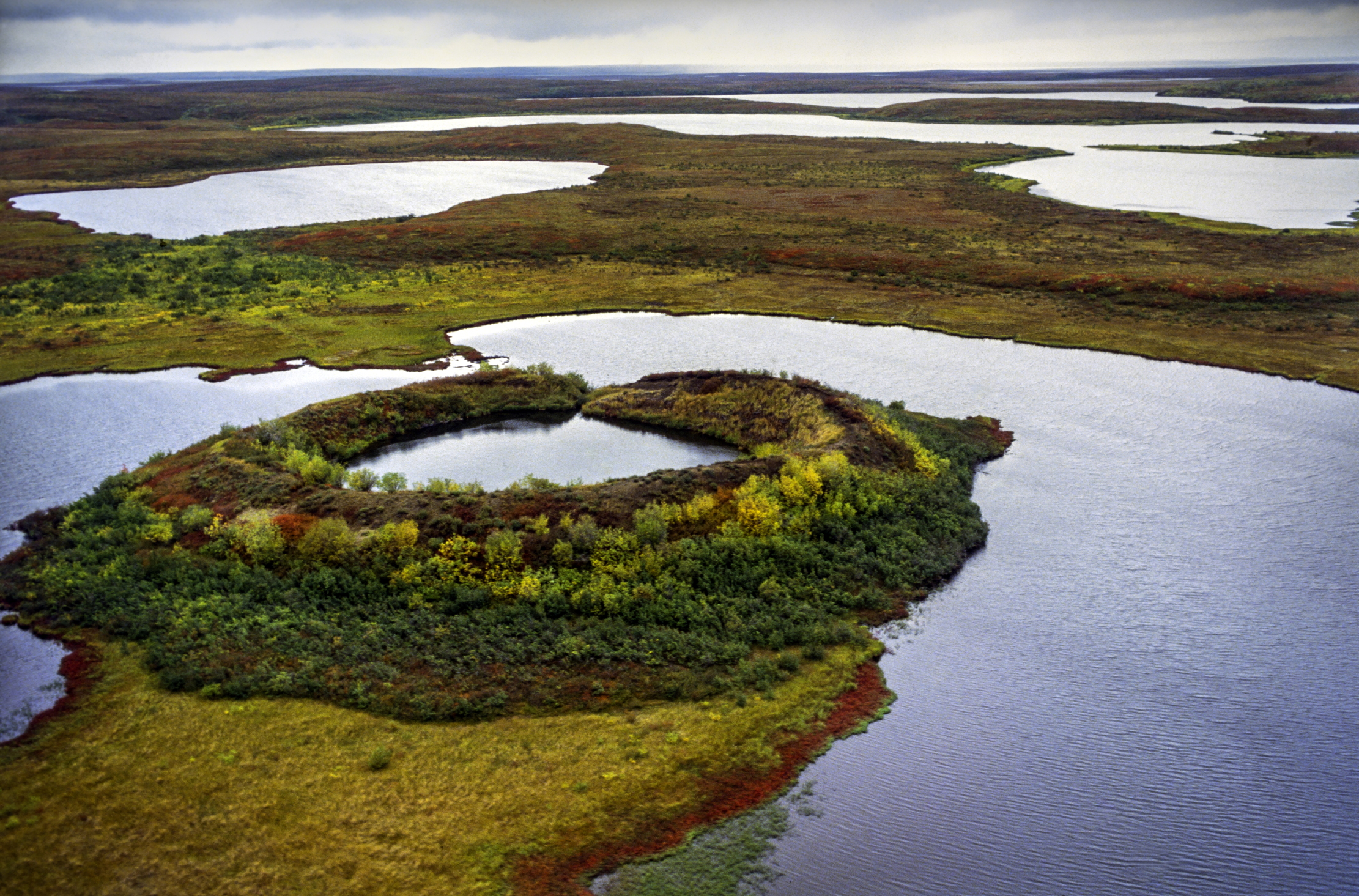 Curious questions: how an underground pond from the last Ice Age almost stopped the Blackwall Tunnel from being built
Curious questions: how an underground pond from the last Ice Age almost stopped the Blackwall Tunnel from being builtYou might think a pond is just a pond. You would be incorrect. Martin Fone tells us the fascinating story of pingo and dew ponds.
By Martin Fone Published
-
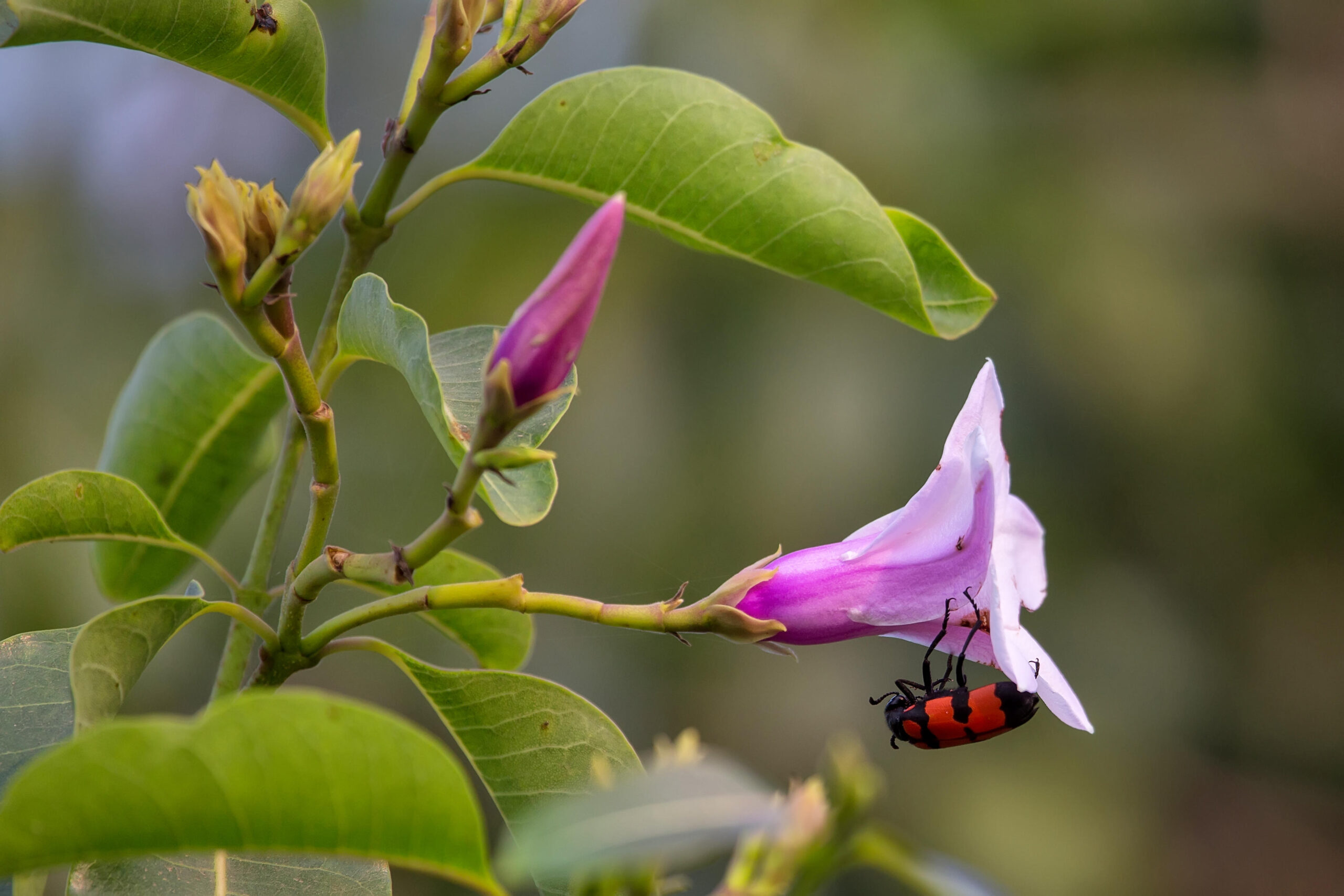 Curious Questions: What's in a (scientific) name? From Parastratiosphecomyia stratiosphecomyioides to Myxococcus llanfair pwll gwyn gyll go gery chwyrn drobwll llan tysilio gogo goch ensis, and everything in between
Curious Questions: What's in a (scientific) name? From Parastratiosphecomyia stratiosphecomyioides to Myxococcus llanfair pwll gwyn gyll go gery chwyrn drobwll llan tysilio gogo goch ensis, and everything in betweenScientific names are baffling to the layman, but carry all sorts of meanings to those who coin each new term. Martin Fone explains.
By Martin Fone Published
-
 Curious Questions: How did a scrotum joke confuse paleontologists for generations?
Curious Questions: How did a scrotum joke confuse paleontologists for generations?One of the earliest depictions of a fossil prompted a joke — or perhaps a misunderstanding — which coloured the view of dinosaur fossils for years. Martin Fone tells the tale of 'scrotum humanum'.
By Martin Fone Published
-
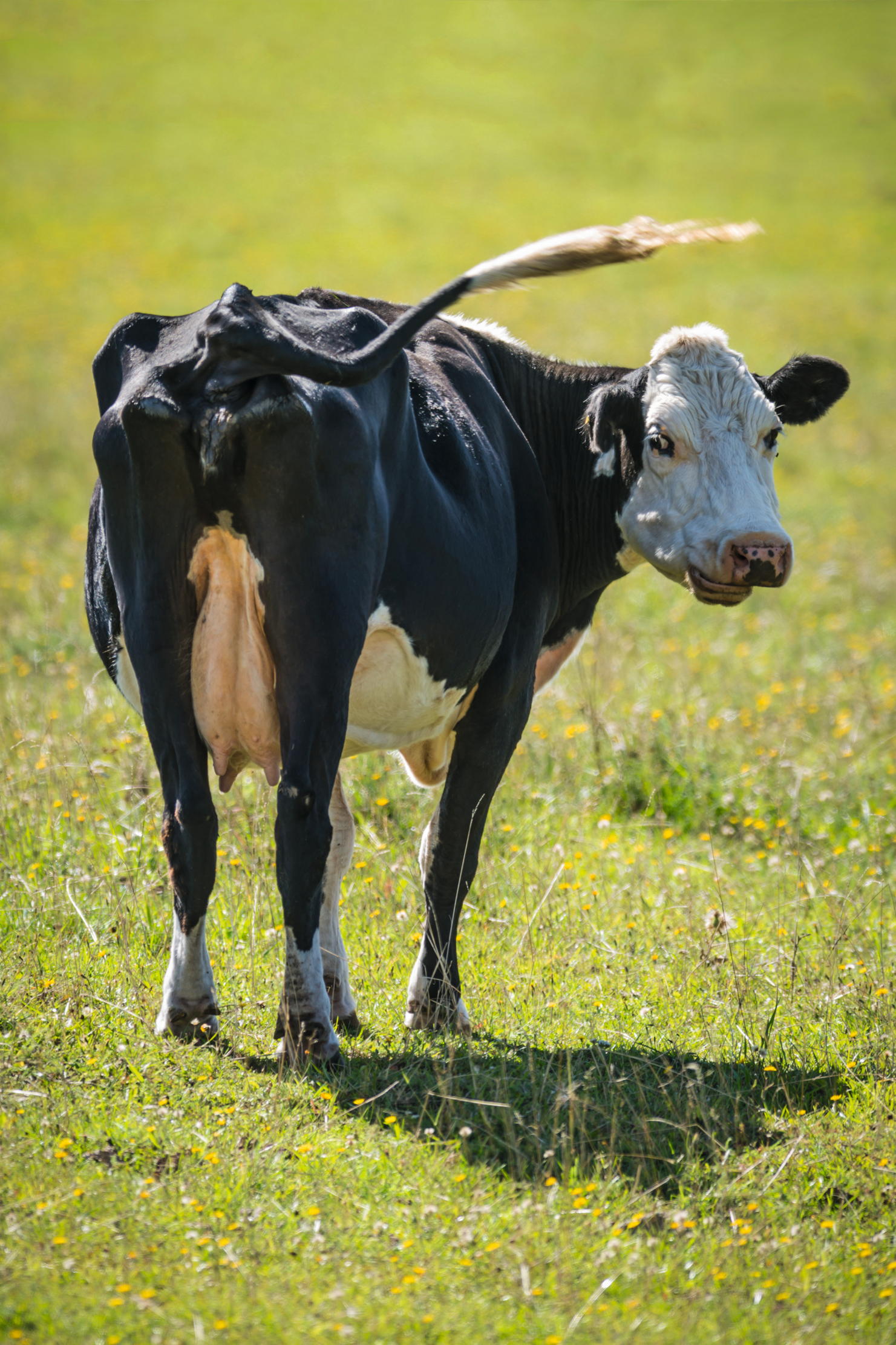 Curious Questions: Why do so many animals have bright white bottoms?
Curious Questions: Why do so many animals have bright white bottoms?Why do so many animals have such obviously flashy appendages, asks Laura Parker, as she examines scuts, rumps and rears.
By Laura Parker Published
-
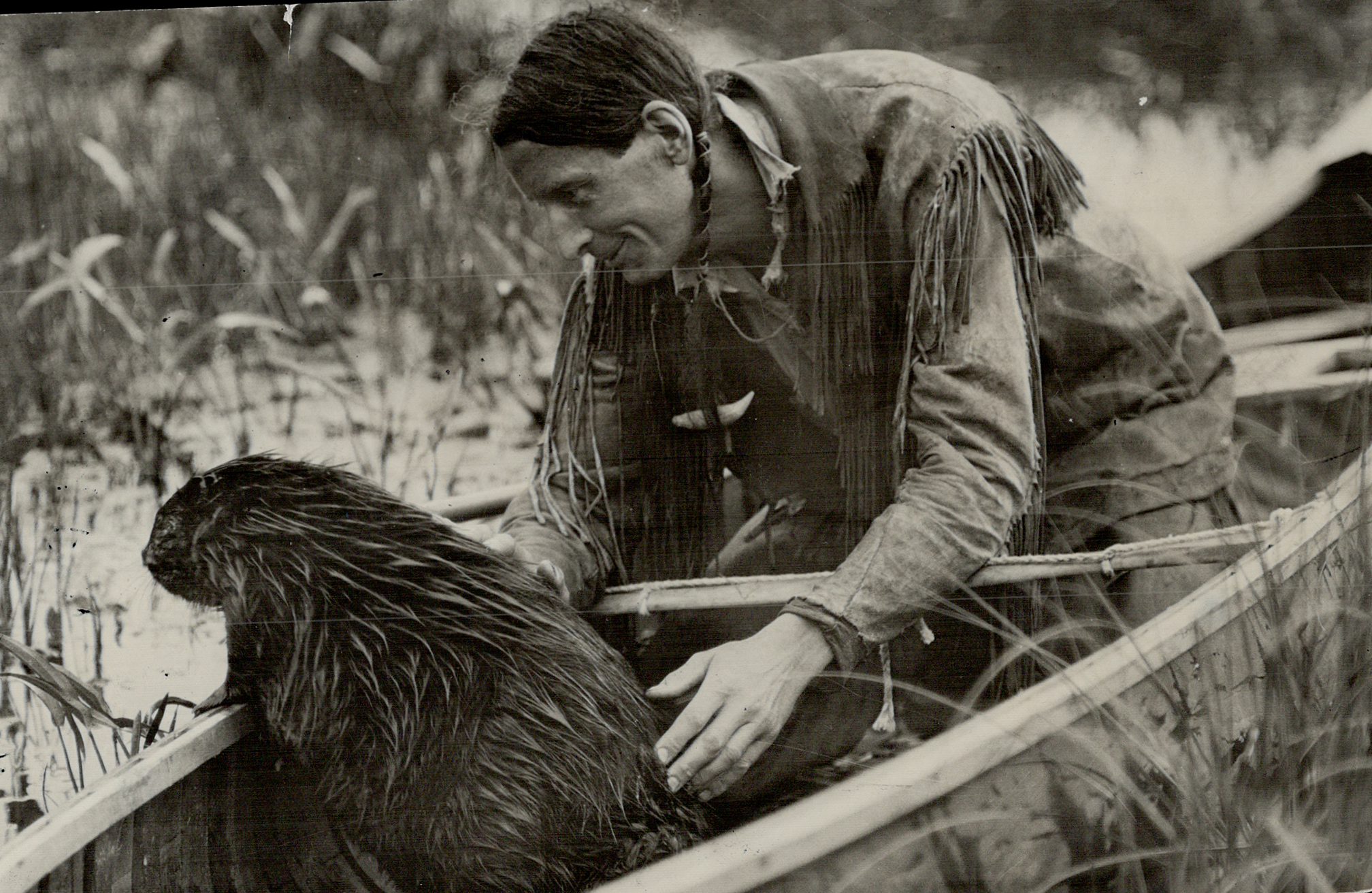 The 1930s eco-warrior who inspired David Attenborough and The Queen, only to be unmasked as a hoaxer and 'pretendian' — but his message still rings true
The 1930s eco-warrior who inspired David Attenborough and The Queen, only to be unmasked as a hoaxer and 'pretendian' — but his message still rings trueMartin Fone tells the astonishing story of Grey Owl, who became a household name in the 1930s with his pioneering calls to action to save the environment — using a false identity to do so.
By Martin Fone Published
-
 Curious Questions: Why do all of Britain's dolphins and whales belong to the King?
Curious Questions: Why do all of Britain's dolphins and whales belong to the King?More species of whale, dolphin and porpoise can be spotted in the UK than anywhere else in northern Europe and all of them, technically, belong to the Monarch. Ben Lerwill takes a look at one of our more obscure laws and why the animals have such an important role to play in the fight against climate change.
By Ben Lerwill Published